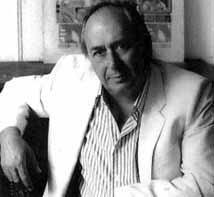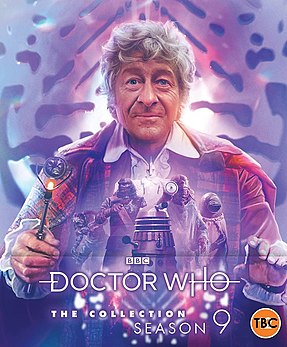Related Research Articles

Gothic fiction, sometimes called Gothic horror, is a loose literary aesthetic of fear and haunting. The name refers to Gothic architecture of the European Middle Ages, which was characteristic of the settings of early Gothic novels.

Horror is a genre of fiction that is intended to disturb, frighten or scare. Horror is often divided into the sub-genres of psychological horror and supernatural horror, which are in the realm of speculative fiction. Literary historian J. A. Cuddon, in 1984, defined the horror story as "a piece of fiction in prose of variable length... which shocks, or even frightens the reader, or perhaps induces a feeling of repulsion or loathing". Horror intends to create an eerie and frightening atmosphere for the reader. Often the central menace of a work of horror fiction can be interpreted as a metaphor for larger fears of a society.

James Graham Ballard was an English novelist, short story writer, satirist, and essayist known for provocative works of fiction which explored the relations between human psychology, technology, sex, and mass media. He first became associated with the New Wave of science fiction for post-apocalyptic novels such as The Drowned World (1962), but later courted controversy for the experimental short story collection The Atrocity Exhibition (1970), which included the 1968 story "Why I Want to Fuck Ronald Reagan", and the novel Crash (1973), a story about a renegade group of car crash fetishists.

The undead are beings in mythology, legend, or fiction that are deceased but behave as if alive. Most commonly the term refers to corporeal forms of formerly alive humans, such as mummies, vampires, and zombies, who have been reanimated by supernatural means, technology, or disease. In some cases, the term also includes incorporeal forms of the dead, such as ghosts.
Hammer Film Productions Ltd. is a British film production company based in London. Founded in 1934, the company is best known for a series of Gothic horror and fantasy films made from the mid-1950s until the 1970s. Many of these involve classic horror characters such as Baron Victor Frankenstein, Count Dracula, and the Mummy, which Hammer reintroduced to audiences by filming them in vivid colour for the first time. Hammer also produced science fiction, thrillers, film noir and comedies, as well as, in later years, television series.

Katharine Mosse is a British novelist, non-fiction and short story writer and broadcaster. She is best known for her 2005 novel Labyrinth, which has been translated into more than 37 languages. She co-founded in 1996 the annual award for best UK-published English-language novel by a woman that is now known as the Women's Prize for Fiction.

Southern Gothic is an artistic subgenre of fiction, country music, film and television that are heavily influenced by Gothic elements and the American South. Common themes of Southern Gothic include storytelling of deeply flawed, disturbing or eccentric characters who may be involved in hoodoo, decayed or derelict settings, grotesque situations, and other sinister events relating to or stemming from poverty, alienation, crime, or violence.
Abhuman is a term used to distinguish a separation from normal human existence. This is different from inhuman, which typically connotes an ethical or moral separation from others.

The Jewel of Seven Stars is a horror novel by Irish writer Bram Stoker, first published by Heinemann in 1903. The story is a first-person narrative of a young man pulled into an archaeologist's plot to revive Queen Tera, an ancient Egyptian mummy. It explores common fin de siècle themes such as imperialism, the rise of the New Woman and feminism, and societal progress.

Dame Marina Sarah Warner, is an English historian, mythographer, art critic, novelist and short story writer. She is known for her many non-fiction books relating to feminism and myth. She has written for many publications, including The London Review of Books, the New Statesman, Sunday Times and Vogue. She has been a visiting professor, given lectures and taught on the faculties of many universities.

Weird West is a term used for the hybrid genres of fantasy Western, horror Western and science fiction Western. The term originated with DC's Weird Western Tales in 1972, but the idea is older as the genres have been blended since the 1930s, possibly earlier, in B-movie Westerns, comic books, movie serials and pulp magazines. Individually, the hybrid genres combine elements of the Western genre with those of fantasy, horror and science fiction respectively.
Joann Fletcher is an Egyptologist and an honorary visiting professor in the department of archaeology at the University of York. She has published a number of books and academic articles, including several on Cleopatra, and made numerous television and radio appearances. In 2003, she controversially claimed to have identified the mummy of Queen Nefertiti.

The Mummy's Curse is a 1944 American horror film directed by Leslie Goodwins. Produced by Universal Pictures, it is the fifth entry in Universal's original Mummy franchise, serving as a sequel to The Mummy's Ghost (1944). It marks Lon Chaney Jr.'s final appearance as Kharis, an Egyptian mummy.
Mitzi Szereto is an American-British author of multi-genre fiction and nonfiction. She has written novels and short stories, and edited fiction and nonfiction anthologies, including her popular true crime franchise "The Best New True Crime Stories." Her books to date have been in the areas of crime fiction, true crime, cozy mystery, Gothic fiction, horror, quirky fiction, apocalyptic and post-apocalyptic fiction, paranormal romance, sci-fi/fantasy, erotic literature, parody and satire, Southern fiction, and fiction and nonfiction anthologies. She edited the first anthology of erotic fiction to include a Fellow of the Royal Society of Literature. A story contribution from her crime fiction anthology Getting Even: Revenge Stories received a “Highly Commended” from the Crime Writers’ Association’s (CWA) Short Story Dagger. Her books and short stories have been translated into several languages. She created/presented "Mitzi TV," a Web TV channel covering the quirky side of London, England; segments have ranged from chatting about vintage cars with Formula 1 race car driver/BBC TV presenter Tiff Needell and couture shoe designer Jimmy Choo to joining in a lively pub singalong and covering a teddy bear festival. She makes a cameo appearance portraying herself in the British mockumentary Lint the Movie. She also maintains a blog of humorous personal essays at "Errant Ramblings: Mitzi Szereto's Weblog."

"Lot No. 249" is a Gothic horror short story by British writer Arthur Conan Doyle, first published in Harper's Magazine in 1892. The story tells of a University of Oxford athlete named Abercrombie Smith who notices a strange series of events surrounding Edward Bellingham, an Egyptology student who owns many ancient Egyptian artefacts, including a mummy. After seeing his mummy disappear and reappear, and two instances of Bellingham's enemies getting attacked, Smith concludes that Bellingham is reanimating his mummy. Smith confronts Bellingham, who denies this is the case; the next day, Smith is attacked by the mummy and escapes. Smith then forces Bellingham to destroy his mummy and the associated artefacts at gunpoint.
Marty Ross is a Scottish writer, best known for his audio dramas for the British Broadcasting Corporation, Big Finish Productions and for the Wireless Theatre Company and 3Dhorrorfi. He is author of the 'Tartan Noir' thriller novel Aztec Love Song. He has had several plays performed on stage, mostly with an emphasis on Gothic horror and the surreal. He has dramatized stories by other Scottish writers such as James Hogg, Robert Louis Stevenson, and Sir Arthur Conan Doyle in his radio series The Darker Side of the Border. Among his influences are the work of Hammer Films and British science fiction dramatist Nigel Kneale.

The ninth season of British science fiction television series Doctor Who began on 1 January 1972 with Day of the Daleks, and ended with The Time Monster. This is the third series of the Third Doctor, played by Jon Pertwee, as well as the third to be produced by Barry Letts and script edited by Terrance Dicks.

Mummies are commonly featured in horror genres as undead creatures wrapped in bandages. Similar undead include skeletons and zombies.
The World of Hammer is a British television documentary series created and written by Robert Sidaway and Ashley Sidaway, and produced by Robert Sidaway.
References
- ↑ "Professor Roger Luckhurst". Birkbeck, University of London. Retrieved 1 January 2016.
- ↑ Luckhurst, Roger (22 October 2013). "The gothic horror revival preys on your worst fears". The Guardian. Retrieved 1 January 2016.
- ↑ "Thinking Allowed". BBC Radio 4. The British Broadcasting Corporation. 8 August 2011. Retrieved 1 January 2016.
- ↑ "True Tales from the Crypt". BBC Radio 4. The British Broadcasting Corporation. 21 September 2012. Retrieved 1 January 2016.
- ↑ Luckhurst, Roger (19 April 2012). "The Essay: Bram Stoker". BBC Radio 3. The British Broadcasting Corporation. Retrieved 1 January 2016.